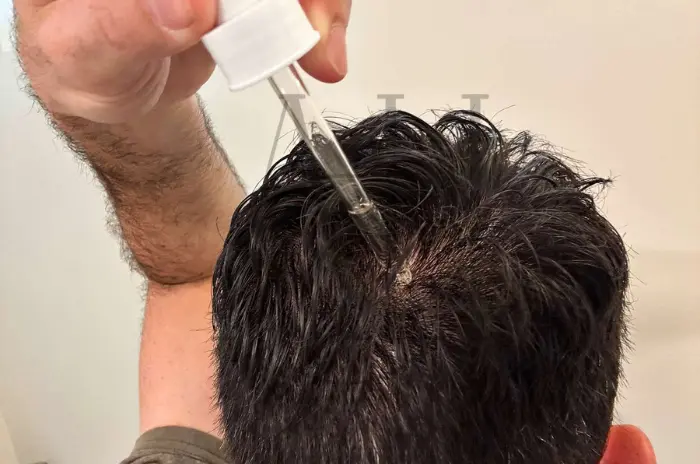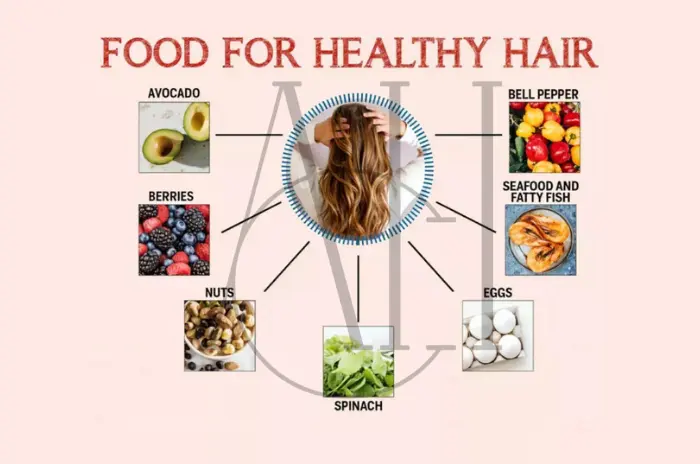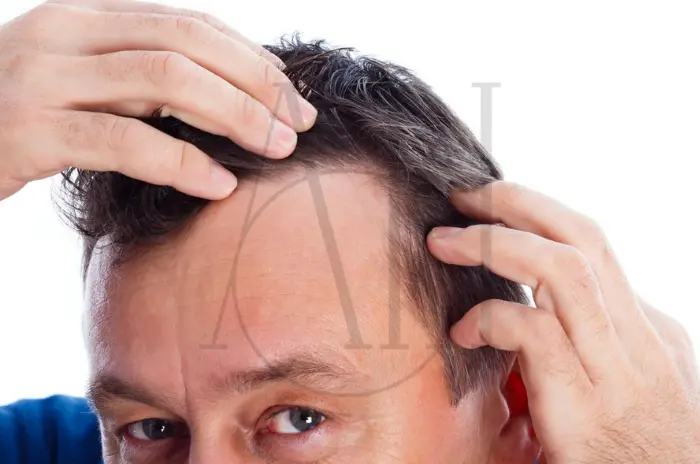Table of Contents
ToggleCan Hair Growth Serums Treat Hair Loss?
Hair growth serums have become increasingly popular as a non-invasive solution for addressing various types of hair loss. These topical treatments promise to stimulate hair growth, strengthen existing strands, and restore confidence to those experiencing thinning hair. Understanding their true effectiveness and limitations is crucial for making informed decisions about hair loss treatment.
Do Hair Growth Serums Actually Work?
Hair growth serums can be effective for certain types of hair loss, but their success largely depends on the active ingredients, the underlying cause of hair loss, and consistent application over time. Scientific research supports the effectiveness of specific ingredients commonly found in quality hair growth serums.
Evidence-Based Serum Ingredients:
- Minoxidil: Vasodilator that improves blood flow to follicles
- Copper Peptides: Stimulate follicle regeneration and hair growth
- Adenosine: Extends anagen phase and increases hair thickness
- Procyanidin B-2: Apple polyphenol that promotes follicle activity
- Caffeine: Stimulates circulation and may counteract DHT effects
- Saw Palmetto: Natural DHT blocker that may prevent hair loss
Clinical Effectiveness Rates:
| Ingredient | Success Rate | Hair Growth Increase | Time to Results |
|---|---|---|---|
| Minoxidil 5% | 70-80% | 20-25% density | 3-6 months |
| Copper Peptides | 60-70% | 15-20% thickness | 2-4 months |
| Adenosine | 50-60% | 10-15% density | 4-6 months |
| Caffeine | 40-50% | 5-10% growth rate | 3-5 months |
However, serums are most effective for early-stage hair loss and certain conditions like telogen effluvium or stress-related thinning. They work by improving scalp circulation, providing nutrients to follicles, and creating an optimal environment for hair growth. Results vary significantly among individuals, and serums cannot revive completely dead follicles.
Which Types of Hair Loss Can Serums Treat?
Hair growth serums are most effective for specific types of hair loss, particularly those involving temporary follicle disruption rather than permanent follicle destruction. Understanding which conditions respond well to serum treatment helps set appropriate expectations and treatment goals.
Hair Loss Conditions and Serum Effectiveness:
| Condition | Serum Effectiveness | Best Ingredients | Expected Timeline |
|---|---|---|---|
| Early androgenetic alopecia | High | Minoxidil, saw palmetto | 3-6 months |
| Telogen effluvium | Very High | Growth factors, vitamins | 2-4 months |
| Stress-related thinning | High | Caffeine, peptides | 2-5 months |
| Nutritional deficiency hair loss | Moderate | Biotin, amino acids | 3-6 months |
| Alopecia areata (mild) | Low-Moderate | Anti-inflammatory compounds | Variable |
Scarring alopecia, advanced androgenetic alopecia with completely miniaturized follicles, and trichotillomania typically show limited response to serums alone. These conditions may require more aggressive medical intervention or specialized treatments.
Best Serums for Different Hair Loss Causes
Selecting the right serum requires matching active ingredients to specific hair loss causes. Different formulations target various mechanisms of hair loss, from hormonal factors to circulation issues and nutritional deficiencies.
Targeted Serum Recommendations:
| Hair Loss Cause | Primary Ingredients | Supporting Components | Application Frequency |
|---|---|---|---|
| Male pattern baldness | 5% Minoxidil, saw palmetto | Copper peptides, biotin | Twice daily |
| Female pattern thinning | 2-5% Minoxidil, adenosine | Growth factors, vitamins | Once-twice daily |
| Stress/telogen effluvium | Caffeine, peptides | B-vitamins, amino acids | Once daily |
| Hormonal changes | Saw palmetto, pumpkin seed | Zinc, iron supplements | Twice daily |
| Age-related thinning | Growth factors, peptides | Antioxidants, collagen | Once daily |
The most effective serums often combine multiple active ingredients to address hair loss through various pathways. These comprehensive formulations typically include a primary active ingredient alongside supporting compounds that enhance absorption and provide additional benefits.
How to use a hair growth serum step by step
Proper application technique significantly impacts serum effectiveness. Many users fail to achieve optimal results due to incorrect application methods, timing, or inconsistent use patterns. Understanding the correct process ensures maximum benefit from your chosen serum.
Pre-Application Preparation:
Start with a clean, dry scalp to ensure maximum absorption. Wash hair with a gentle shampoo and towel dry thoroughly, leaving hair slightly damp but not wet. Wet hair can dilute the serum and reduce its concentration on the scalp.

Step-by-Step Application Process:
- Section the hair to expose areas of thinning or concern
- Apply serum directly to scalp using dropper or spray applicator
- Massage gently for 1-2 minutes to improve absorption
- Distribute evenly across the treatment area
- Allow to air dry for 10-15 minutes before styling
- Avoid washing hair for at least 4 hours after application
Application Best Practices:
| Factor | Recommendation | Reason |
|---|---|---|
| Timing | Evening application | Allows overnight absorption |
| Amount | 1-2ml per application | Prevents waste, ensures coverage |
| Frequency | As directed (usually daily) | Consistency crucial for results |
| Massage | Gentle circular motions | Improves circulation |
Common application mistakes include using too much product, applying to hair strands rather than the scalp, and inconsistent timing. Evening application allows serums to work overnight without interference from styling products or environmental factors.
Safety and side effects to know
While generally safe for most users, hair growth serums can cause side effects, particularly with potent ingredients like minoxidil. Understanding potential risks helps users make informed decisions and recognize when to discontinue use.
The most frequently reported side effects include scalp irritation, itching, and dryness. These reactions often occur during the initial weeks of use and may resolve as the scalp adjusts to the treatment.
Common Side Effects:
- Scalp irritation and redness
- Temporary increased hair shedding (weeks 2-6)
- Itching and dryness
- Unwanted facial hair growth (rare with minoxidil)
- Contact dermatitis in sensitive individuals
Risk Assessment by Ingredient:
| Ingredient | Risk Level | Common Side Effects | Serious Concerns |
|---|---|---|---|
| Minoxidil | Moderate | Scalp irritation, initial shed | Cardiovascular effects (rare) |
| Caffeine | Low | Mild irritation | None significant |
| Peptides | Very Low | Rare allergic reactions | None known |
| Natural extracts | Low | Occasional sensitivity | Allergic reactions |
Pregnant and breastfeeding women should avoid minoxidil-containing serums due to potential risks. Individuals with cardiovascular conditions should consult healthcare providers before using minoxidil, as systemic absorption can potentially affect blood pressure.
Start with lower concentrations or less frequent applications to allow scalp adaptation. Patch testing on a small area before full application can identify sensitivity reactions.
Serums for women vs men what to consider
Men and women often require different approaches to hair serum selection due to distinct hair loss patterns, hormonal factors, and scalp sensitivities. Understanding these differences ensures optimal product selection and treatment outcomes.
Men typically experience pattern baldness with distinct areas of thinning, while women more commonly show diffuse thinning across the crown. These different patterns require varying application strategies and ingredient concentrations.
Male hair loss primarily involves DHT sensitivity, making DHT-blocking ingredients particularly beneficial. Female hair loss often involves multiple hormonal factors, including estrogen decline, making comprehensive formulations more appropriate.
Gender-Specific Recommendations:
| Aspect | Men | Women | Reasoning |
|---|---|---|---|
| Minoxidil concentration | 5% | 2-5% | Men tolerate higher concentrations |
| DHT blockers | High priority | Moderate priority | Different hormonal profiles |
| Gentle ingredients | Moderate importance | High importance | Women often have sensitive scalps |
| Application frequency | Twice daily tolerated | Once daily often preferred | Lifestyle considerations |
Women who are pregnant, planning pregnancy, or breastfeeding should avoid minoxidil and many other active ingredients. Natural, pregnancy-safe alternatives include caffeine, biotin, and certain botanical extracts.
Women often prefer serums that don’t interfere with styling routines or leave residue, while men typically tolerate greasier formulations better and may prefer stronger concentrations for faster results.
Choosing a serum for sensitive oily or dry scalp
Scalp condition significantly impacts serum selection and effectiveness. Different formulations work better for various scalp types, and choosing the wrong product can exacerbate existing scalp issues or reduce treatment effectiveness.
For sensitive scalps, avoid alcohol-based formulations and opt for gentle, hypoallergenic serums with minimal additives. Look for products specifically labeled for sensitive skin and consider starting with lower concentrations of active ingredients.
For oily scalps, lightweight, non-greasy formulations work best. Alcohol-based serums can help control excess oil while delivering active ingredients. Avoid heavy oils or cream-based formulations that might clog pores.
For dry scalps, choose nourishing formulations with moisturizing ingredients like hyaluronic acid, glycerin, or natural oils. Avoid alcohol-based products that can further dry the scalp.
Scalp-Specific Product Selection:
| Scalp Type | Preferred Formulation | Ingredients to Seek | Ingredients to Avoid |
|---|---|---|---|
| Sensitive | Water-based, fragrance-free | Aloe vera, chamomile | Alcohol, synthetic fragrances |
| Oily | Lightweight, alcohol-based | Salicylic acid, tea tree | Heavy oils, thick creams |
| Dry | Moisturizing, oil-based | Hyaluronic acid, natural oils | High alcohol content |
Start with small amounts and gradually increase as tolerance develops. Monitor scalp response and adjust frequency or product choice accordingly. Some users benefit from alternating between different formulations based on seasonal scalp changes.
Intermediary organizations recommend consulting with dermatologists or trichologists for persistent scalp issues or when multiple products have caused reactions.
FAQ
How do hair growth serums actually work?
Hair growth serums work through multiple mechanisms depending on their active ingredients. Minoxidil improves blood circulation to hair follicles and extends the growth phase of hair. Peptides stimulate cellular regeneration and protein synthesis in follicles. DHT-blocking ingredients like saw palmetto prevent hormonal miniaturization of follicles. Growth factors and vitamins provide essential nutrients for healthy hair development. The serums create an optimal scalp environment for hair growth while addressing specific causes of hair loss.
What is the difference between hair growth and hair fall serum?
Hair growth serums focus on stimulating new hair growth and increasing hair density through ingredients like minoxidil, peptides, and growth factors. Hair fall serums primarily aim to reduce excessive shedding and strengthen existing hair using ingredients like biotin, keratin, and botanical extracts. Growth serums typically contain more potent active ingredients and may cause initial shedding as weak hairs are replaced. Hair fall serums are generally gentler and focus on immediate reduction of hair loss rather than long-term regrowth.
Which types of hair loss can serums treat?
Serums are most effective for androgenetic alopecia in early stages, telogen effluvium, stress-related hair loss, and nutritional deficiency-related thinning. They work well for diffuse thinning patterns and can help maintain existing hair while promoting modest regrowth. Serums are less effective for advanced pattern baldness, scarring alopecia, or autoimmune hair loss conditions like severe alopecia areata. The best candidates are those with recent hair loss onset, miniaturized but still functioning follicles, and reversible hair loss causes.
Can hair growth serums cause any negative side effects?
Yes, hair growth serums can cause side effects, particularly those containing minoxidil. Common side effects include scalp irritation, itching, dryness, and temporary increased shedding during the first 2-6 weeks. Minoxidil can rarely cause unwanted facial hair growth or systemic effects like dizziness. Some users experience contact dermatitis from preservatives or fragrances. Side effects are usually mild and resolve with continued use or product discontinuation. Starting with lower concentrations and patch testing can minimize adverse reactions.



